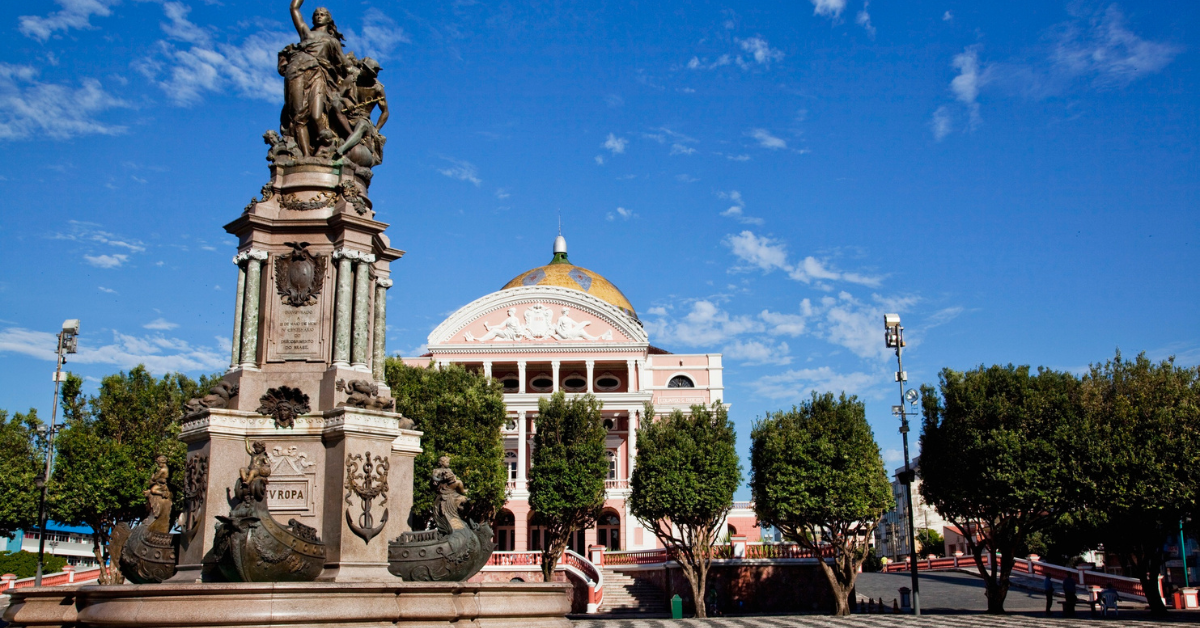Manaus is widely recognized as the largest city in the Amazon basin, and in Japanese it is written in katakana as “マナウス (Manausu)”. There is no kanji representation, as the name is a direct transcription of Portuguese pronunciation. For Japanese people, Manaus is strongly associated with being a hub for tourism and a host city for international sports events.
Why Manaus Has No Kanji Representation
Foreign city names are usually expressed in katakana. Manaus is no exception, and no kanji version exists. Unlike cities like Tokyo or Osaka, which historically developed with their own kanji characters, foreign place names are typically adapted into Japanese based on their sounds.
| City | Native Spelling | Japanese Writing | Kanji Representation |
|---|---|---|---|
| Manaus | Manaus | マナウス (Manausu) | None |
| São Paulo | São Paulo | サンパウロ (Sanpauro) | None |
| Rio de Janeiro | Rio de Janeiro | リオデジャネイロ (Riodejaneiro) | None |
Thus, “Manaus” has no special kanji name and has become established purely as a phonetic transcription.
Tourist Images of Manaus for Japanese People
For Japanese people, Manaus is first and foremost known as the gateway to Amazon tourism. Travel guides and TV programs often introduce it as the “starting point for Amazon River cruises” or the “entrance to jungle exploration.”
Right outside the city lies the vast rainforest, filled with wildlife and exotic plants. For many Japanese, this represents “wilderness” and “untouched nature.” In addition, remnants of the 19th-century rubber boom—such as the grand opera house and European-style architecture—create a striking image of “exotic foreign culture” suddenly appearing in a tropical city.
| Tourist Attraction | Japanese Perception |
|---|---|
| Amazon River | Cruises, fishing, jungle exploration |
| Rainforest | Jungle treks, encounters with wildlife |
| City Architecture | Luxurious theater, European-style buildings |
| City–Nature Balance | A mysterious city where urban life and nature coexist |
In this way, Manaus as a tourist destination embodies both “nature” and “culture” simultaneously, making it unique in Japanese perception.
The Significance of Manaus in Sports
Beyond tourism, Manaus is also known to Japanese people as a stage for sports. This recognition grew especially after the 2014 FIFA World Cup, when Japan played in Manaus at the “Arena da Amazônia,” making the city widely known to Japanese audiences.
The Arena da Amazônia is a large stadium with a design inspired by the Amazon’s nature and traditions. For soccer fans in Japan, the match played there is remembered as one held in an environment of extreme heat and humidity.
| Sports Aspect | Japanese Perception |
|---|---|
| World Cup Venue | Remembered as the city where Japan played |
| Arena da Amazônia | Stadium design inspired by Amazon nature |
| Climate Conditions | Matches in extreme heat and humidity |
| International Stage | Recognized as a global sports city |
Through sports, Japanese people came to recognize Manaus as an international city capable of hosting major world events.
Manaus as a Fusion of Nature and Culture
The Japanese perception of Manaus goes beyond tourism and sports. The city’s multifaceted character shapes a composite image.
- Natural Aspect: Symbol of the Amazon River and rainforest
- Cultural Aspect: Opera houses and European-style architecture left from the rubber boom
- Sports Aspect: A city etched into memory as a World Cup venue
| City Aspect | Japanese Impression |
|---|---|
| Nature | Gateway to Amazon exploration, symbol of vast wilderness |
| Culture | Heritage of the rubber era, blend with European culture |
| Sports | Gained recognition as a World Cup host city |
| Tourism | Exotic city where wilderness and modern life coexist |
Thus, Manaus cannot be described by a single image alone—it represents a multifaceted city in the eyes of Japanese people.
Conclusion
Manaus has no kanji representation and is written in Japanese as “マナウス (Manausu)” in katakana. For Japanese people, the city symbolizes multiple aspects: the gateway to Amazon exploration, a fusion of nature and culture, and a global sports stage through events like the World Cup.
In addition to its appeal as a tourist destination, Manaus has been recognized internationally through sports, solidifying its image as a city of “adventure,” “challenge,” and “cross-cultural experiences.” Moving forward, Manaus will continue to provide new discoveries to Japanese people, both in tourism and international events.






